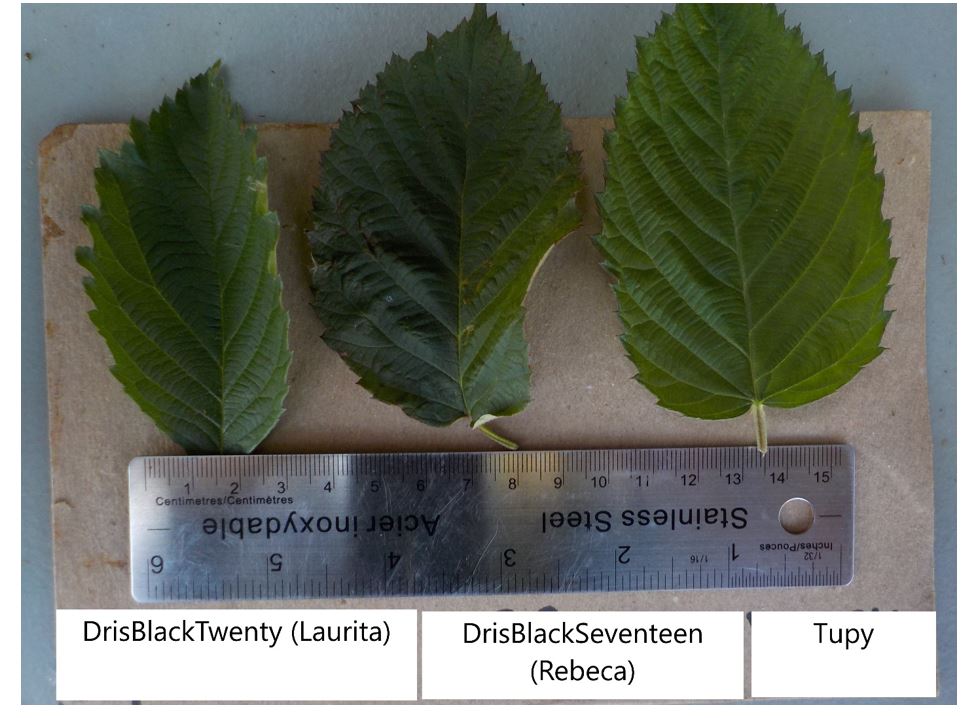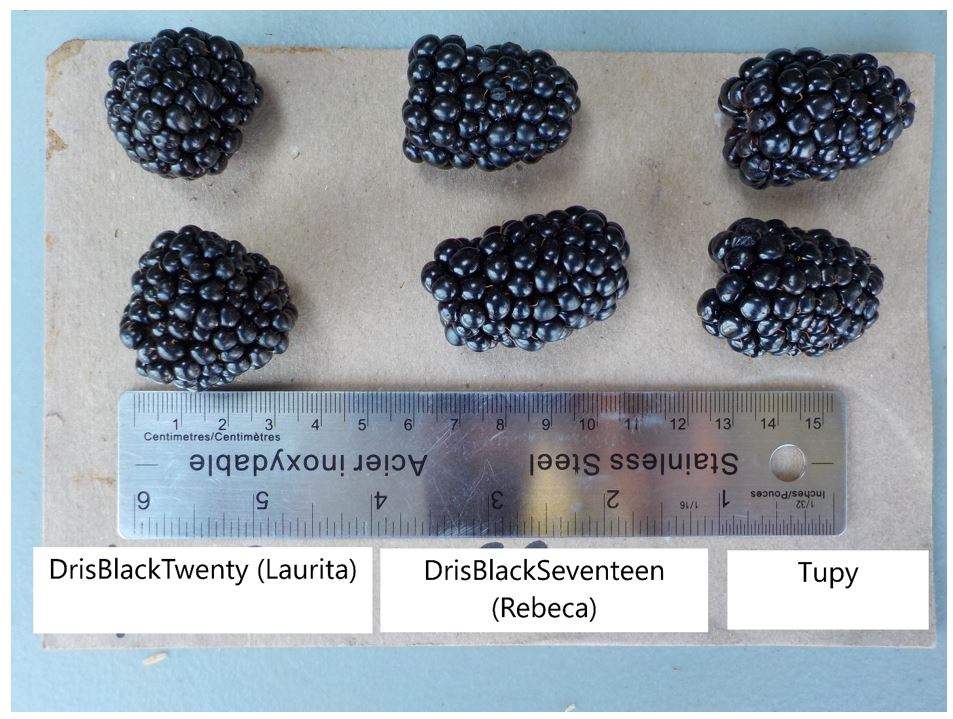DrisBlackTwenty
| Denomination: | 'DrisBlackTwenty' |
|---|---|
| Trade name: | Laurita |
| Botanical Name: | Rubus |
| Applicant/Holder: |
Driscoll's, Inc. 345 Westridge Drive Watsonville, California 95076 United States of America |
| Breeder: |
Gavin R. Sills, Driscoll's, Inc., Watsonville, United States of America Missael Bonifacio R. Escobedo, Driscoll's, Inc., Watsonville, United States of America Mark F. Crusha, Driscoll's, Inc., Watsonville, United States of America |
| Agent in Canada: |
Lavery, De Billy, S.E.N.C.R.L. - LLP 1 Place Ville Marie, Suite 4000 Montreal, Quebec H3B 4M4 Canada Tel: 514 397-5138 |
| Application Date: | 2019-04-17 |
| Provisional Protection:: | 2019-10-03 |
| Application Number: | 19-10012 |
| Grant of Rights Date: | 2022-08-09 |
| Certificate Number: | 6621 |
| Exemption from compulsory licensing: | Yes |
| Expiry date for exemption from compulsory licensing: | 2024-08-09 |
| Grant of Rights Termination Date: | 2042-08-09 |
Variety Description
Varieties used for comparison: 'DrisBlackSeventeen' (Rebeca) and 'Tupy'
Summary: The dormant cane of 'DrisBlackTwenty' has a weak to medium intensity of anthocyanin colouration while that of 'DrisBlackSeventeen' has a strong intensity of anthocyanin colouration. The dormant cane of 'DrisBlackTwenty' is angular in cross-section while the dormant cane of 'DrisBlackSeventeen' is grooved and that of 'Tupy' is rounded. The dormant cane of 'DrisBlackTwenty' has no spines while that of 'Tupy' has very many large spines. The leaf of 'DrisBlackTwenty' has serrate incisions of margin while the leaf of 'DrisBlackSeventeen' has bi-serrate incisions of margin. The flower of 'DrisBlackTwenty' is pinkish while those of the reference varieties are white. The fruit of 'DrisBlackTwenty' has a small length to width ratio while the length to width ratio is medium to large for the fruit of 'DrisBlackSeventeen' and medium for the fruit of 'Tupy'. Fruiting is present on the current year`s canes of 'DrisBlackTwenty' while it is absent on the current year`s canes of the reference varieties.
Description:
PLANT: upright to semi-upright growth habit, many new canes, suckering from roots, leaf bud burst occurs very early to early in season, begins flowering early to mid-season on previous year`s cane and early in the season on current year`s cane, begins fruit ripening on previous year`s cane mid to late in the season and early in the season on current year`s cane.
YOUNG SHOOT (during rapid growth): weak intensity of anthocyanin colouration, medium green, many glandular hairs
DORMANT CANE: weak to medium intensity of anthocyanin colouration, many branches distributed over whole length, angular in cross-section, no spines
CURRENT YEAR'S CANE: fruiting present
PETIOLE: small stipules
LEAF: predominantly three and five leaflets, odd-pinnate type, dark green on upper side, medium to strong glossiness on upper side
TERMINAL LEAFLET: lobing absent, u-shaped in cross-section, medium undulation of margin, medium to strong blistering between veins
LEAFLET: deep serrate incisions of margin
FLOWER: pinkish, dense glandular hairs on pedicel
FRUITING LATERAL: absent or very few prickles
FRUIT: small length to width ratio, few to a medium number of large drupelets, circular in longitudinal section, black
Origin & Breeding History: 'DrisBlackTwenty' originated from a cross between two proprietary lines,'BN843.2', as the female parent, and 'BL481.3', as the male parent, conducted in April 2010. 'DrisBlackTwenty' was selected in Los Reyes, Mexico in 2011 on the basis of plant vigor, yield, fruit shelf-life and flavour. 'DrisBlackTwenty' was further propagated by root cuttings and underwent additional testing in Los Reyes, Mexico from 2012 to 2018.
Tests & Trials: The comparative trial for 'DrisBlackTwenty' was conducted in Chilliwack, British Columbia during the 2021 growing season with dormant cane traits being assessed late in the fall of 2020. There were four replicates per variety arranged in a randomized complete block design. Each replicate consisted of 3 plants in a 2.7 metre row for a total of 12 plants per variety. Plants were spaced approximately 0.91 metres apart within the row with 3 metre inter-row spacing. Observations were taken from 10 plants or parts of 10 plants of each variety.
Click on image for larger view

Blackberry: 'DrisBlackTwenty' (left) with reference varieties 'DrisBlackSeventeen' (centre) and 'Tupy' (right)
Click on image for larger view

Blackberry: 'DrisBlackTwenty' (centre) with reference varieties 'DrisBlackSeventeen' (left) and 'Tupy' (right)
Click on image for larger view

Blackberry: 'DrisBlackTwenty' (left) with reference varieties 'DrisBlackSeventeen' (centre) and 'Tupy' (right)
- Date modified: